An Infantry Fighting Vehicle based on the FIAT 6614
In the early 1970s, the newly formed consortium FIAT - OTO Melara for defence, developed on request by the Italian army prototypes of 4x4 armored vehicles. They were supposed to constitute the bulk of new reconnaissance batallions, and be composed of a troop carrier and a fighting vehicle. The result were, based on the same platform and hull, the Tipo 6614 and Tipo 6616.They shared many common parts as well as components from the civilian market, which also improved reliability and maintenance given the FIAT network of spare parts, including across the world if deployed abroad. The 6616 prototype was completed in 1972, with a batch 50 delivered to the Carabinieri. In grand total, 1,160 combined were delivered to Libya, Peru, Somalia and Tunisia with the production ending in 1984. As for the 6616, exports and national needs are going for 185 vehicles with some sources stating 300 vehicles.
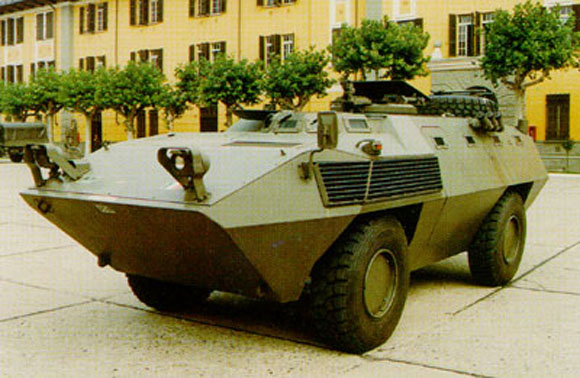
Appearance of the initial Fiat Tipo 6614 (FIAT)
Development
Since NATO's requirements about APCs was relatively loose most countries could create their own APC models, tracked and wheeled. In Italy, FIAT received a contract for the maintenance of the US M113 and they formed the tracked backbone of its motorized infantry units, but the police also wanted a cheap and reliable 4x4 armoured vehicle. FIAT accepted to develop the 6614 for Carabineri (police) and air force (Aeronautica Militare) and then compensate the development costs by vigorous exports. 40 vehicles of the first batch were indeed purchased by the State Police. A second of 110 were delivered to the Air Force, but there were tipos 6614.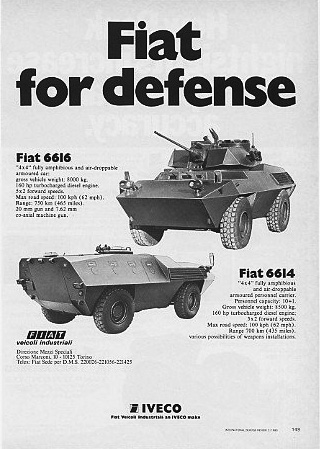 But the Tipo 6616 was only purchased by the Carabineri (some sources conflicts and states these were 6614) so far and not a great development RoI for FIAT. So intensive lobbying to sell the 6616 aside the 6614 were undergoing as soon as export commenced. Production of the FIAT-Otobreda Type 6616 armoured car reached according to crossed sources, to 300 vehicles built. The manufacturer had facilities at Bolzano which later became the IVECO Defence Vehicles Division. Unlike the APC, the IFV, dubbed at the time an "armoured car" due to its limited protection and armament, had a complete two-man turret that could be installed on the same turret ring as for the APC and was designed and manufactured Otobreda. It seems also that the Air Force tested the 6616 to replace the wintage WW2 T17E1 Staghound.
But the Tipo 6616 was only purchased by the Carabineri (some sources conflicts and states these were 6614) so far and not a great development RoI for FIAT. So intensive lobbying to sell the 6616 aside the 6614 were undergoing as soon as export commenced. Production of the FIAT-Otobreda Type 6616 armoured car reached according to crossed sources, to 300 vehicles built. The manufacturer had facilities at Bolzano which later became the IVECO Defence Vehicles Division. Unlike the APC, the IFV, dubbed at the time an "armoured car" due to its limited protection and armament, had a complete two-man turret that could be installed on the same turret ring as for the APC and was designed and manufactured Otobreda. It seems also that the Air Force tested the 6616 to replace the wintage WW2 T17E1 Staghound.
Design
Hull and Protection
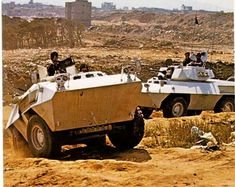 The 6616 hull is made of welded steel, 8 mm (0.3 in) all around. The driver's seat is located at the front-left and it is equipped with five episcopes allowing observation towards the front and sides. These five vision blocks coverd an arc of 200° and the centre one is given a wiper blade. The engine and transmission are also located at the front right side, leaving space, not for infantry in that case, but to the large turret pannier that filled most of the space, and a few additional space taken by spare rounds at the rear.
The 6616 hull is made of welded steel, 8 mm (0.3 in) all around. The driver's seat is located at the front-left and it is equipped with five episcopes allowing observation towards the front and sides. These five vision blocks coverd an arc of 200° and the centre one is given a wiper blade. The engine and transmission are also located at the front right side, leaving space, not for infantry in that case, but to the large turret pannier that filled most of the space, and a few additional space taken by spare rounds at the rear.
Insert: Libyan Tipo 6616
This turret was all-welded, 6 faces, centre of the hull. The commander is seated on the left, gunner on the right. Seats can be adjusted in height as mounted on the turret basket. The commander possessed nine periscopes (peripheric vision) with a single-piece hatch cover, rear opening. The gunner is given a single-piece hatch cover, rear-opening and main periscope sight forward of his position on the roof.
The gunner had an Alenia P204 periscope which magnification of x 1 in general observation can go up to x 8 for aiming purposes, by daylight, and 9° field of view. The gunner can swap it for a night sight, P194 image intensifier with a x 8 magnification and 7.9° field of view. It had a periscopic head elevating to +60°, depressed -10°. Threre is a radio mounted in the turret bustle as well. On each turret side, three electrically operated fog-type grenade launchers are installed.
Engine and performances
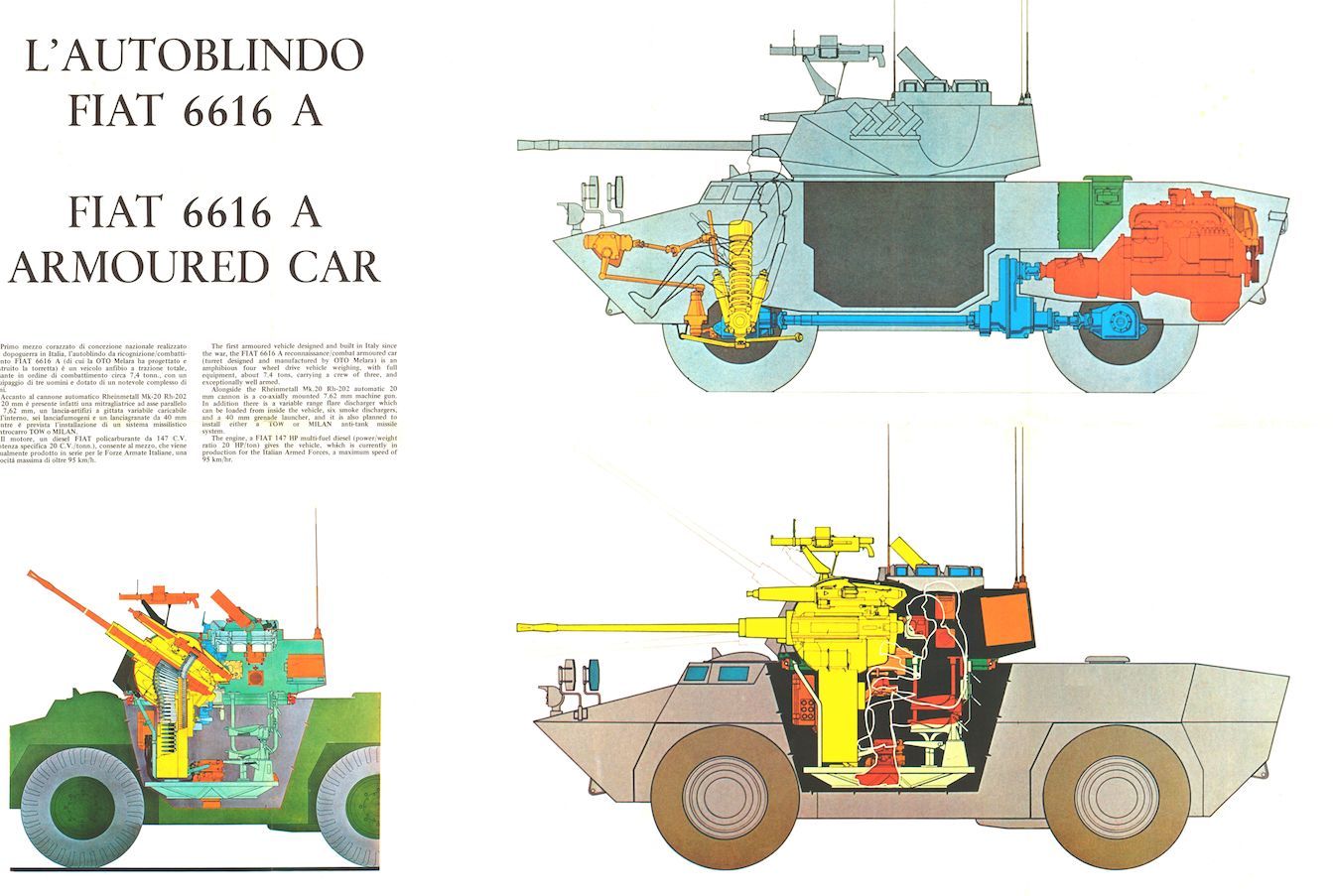
FIAT Tipo 6616 ad brochure technical details
The engine compartment at the rear was separated from the fighting compartment by a fireproof bulkhead, but had no fire extinguishing system. This FIAT engine was coupled to a manual five-speed transmission, then goinf through a two-speed transfer case spread to the front and rear axles by propeller shafts. Both front and rear differentials were mechanically lockable. Theere planetary final drives front and rear with epicyclic gear trains, fitted in the wheel hubs.
The Fiat 6616 suspension are exactly the same also as on the 6614: Front and rear they comprised independent strut and link systems, with helical spring, coaxial rubber bump stop. Each wheel station had its own hydrauloc shock absorbers and anti-roll bars. Tyres were run-flat while steering was power assisted. Optional equipment included NBC protection for the crew, collective, air conditioning system as well as an automatic fire extinguisher.
There was also an optional front-mounted winch, powered by a PTO connected to the transmission rated for a capacity of 4,500 kg. The bobbin rolled up to 40 m steel cable, 12 mm in diameter. The Type 6616 like the 6614 was fully amphibious and had enough buoyancy. It was however propelled by its wheels when swimming. No rudder nor waterjets. When prepared to cross a waterway, the bilge pumps (capacity 180 litres per minute) were activated, and submerged mechanical components could be ressurized but there was no trim vane.
The naturally boat-like shaped hull was welded and all joints made waterproof to not be prepared and be able to cross water at any moment, keeping the reconnaissance momentum. The Fiat 6616 was thus, like the 6614 often used in natural disasters, and proved a valuable asset for mobile police of State Police. However the much heavier and less stable 6616 is less efficient than the APC on that chapter.
Armament
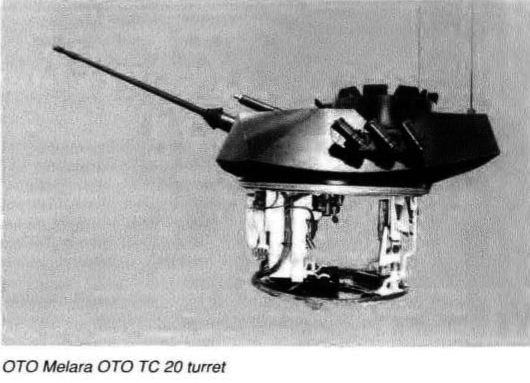
The main Fiat 6616 armament consisted of a Rheinmetall 20 mm MK 20 Rh 202 cannon. Empty cartridge cases were automatically ejected outside through small trap at the turret's back. The vehicle carried "only" a total of 250 rounds in belts, for ready use in the turret. However there were 150 rounds in reserve, hosted in the hull. The main gun had a coaxial 7.62 mm machine gun of the MG3 type, provided with 300 ready rounds, 700 more carried in reserve bins. Usable for active protection on either side of the turret were three 76 mm smoke grenade dischargers, on rails and different angles, electrically fired from within.
Variants/Exports
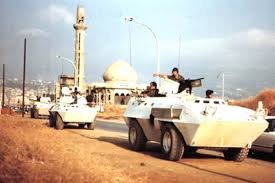 For trials only, the Type 6616 was given all sorts of different weapons systems, ranging from a 25 mm Bushmaster, to a US 60 mm and Belgian Cockerill medium and French 90 mm low pressure gun in two-man turrets, one tailored, the other coming from the Panhard AML 90. None entered production but they were exhibited in various shows for years. The production line for the chassis was eventually closed down and it seems they are not going to resume anytime soon. The Type 6616 is now considered a brave cold war endeavour but would be toast for any modern AFV.
For trials only, the Type 6616 was given all sorts of different weapons systems, ranging from a 25 mm Bushmaster, to a US 60 mm and Belgian Cockerill medium and French 90 mm low pressure gun in two-man turrets, one tailored, the other coming from the Panhard AML 90. None entered production but they were exhibited in various shows for years. The production line for the chassis was eventually closed down and it seems they are not going to resume anytime soon. The Type 6616 is now considered a brave cold war endeavour but would be toast for any modern AFV.
Insert: Libyan Tipo 6616
The Tipo 6616 had a roof mount allowing to install a 106 mm M40-type recoilless rifle forward of the commander's position, for additional hitting power against tanks, however this 1970s solution was rarely seen in photos. One impressive evolution of the Tipo 6616 however is the remarkable Peruvian model, completely modernized to stay service until today. Not only it received an up-armored turret front, its roof had an additional Browning M1919 machine gun while it kept the 7,62 mm MG3 coaxial. But it was given two HJ-73C ATGM launchers (antitank missiles), a laser designator was mounted on the other side (right) as well as a Flare dispenser. However its seems only 15 had been upgraded this way.
Tipo 6616/25mm Prototype
Tipo 6616/60mm Prototype
Tipo 6616/90mm Prototypes (photos)
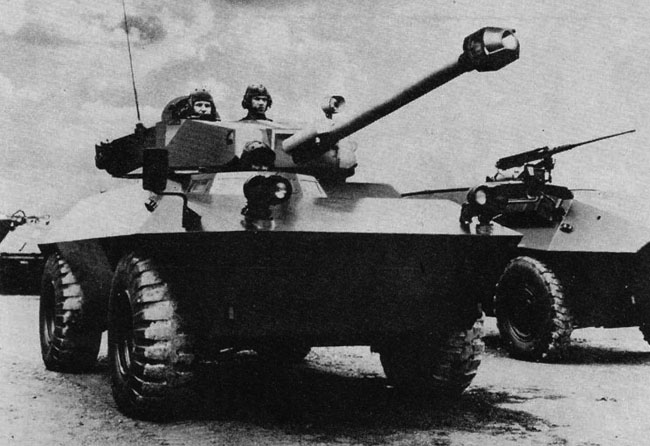

- Italy: Carabinieri: 52 Tipo 6616
- Libyan army: 200. After the 2015 civil war, 100 tipo 6616
- Peruvian Army 70 6616 (15 modernized, src army-guide)
- Somalian army 30 6616
Links/Src
armyrecognition.comtwitter.com
Prototype photo 1972, fiar archives
primeportal.net
armyrecognition.com
en.topwar.ru
militaryperiscope.com
forum.warthunder.com
6614 On military-today.com
6614 On militaryfactory.com
On army-guide
6616 on warwheels
6616 on warwheels
Old Janes article
Wiki
The 6616 in Somalian service
www.reddit.com/r/Warthunder
Fiat 6616 specifications | |
| Dimensions | 7,2 x 2,9 x 2,4 m ( x x ft) |
| Total weight, battle ready | 15 tons |
| Crew | 4 (driver, Cdr, gunner, loader) |
| Propulsion | Detroit 6V53T, 6-cyl. diesel 275 hp (205 kW) |
| Suspension | Torsion bars |
| Speed (road) | 60 km/h road, 6 kph water |
| Range | 500 km (? mi) |
| Armament | 20 mm autocannon |
| Armor | 25-32+6 mm - see notes |
| Total production | c300 |
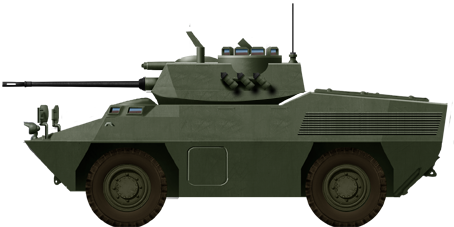
Fiat Tipo 6616 of the Carabinieri.
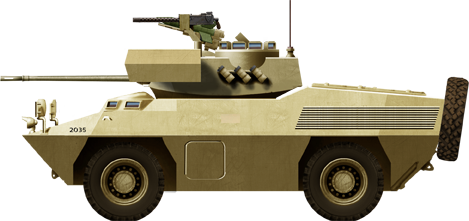
Peruvian modernized Tipo 6616, still in service today,
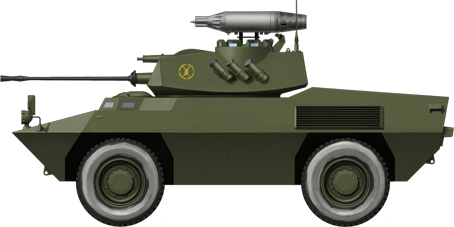
Somaliland modified Tipo 6616, illu by 'Vesp' Anagra
Gallery
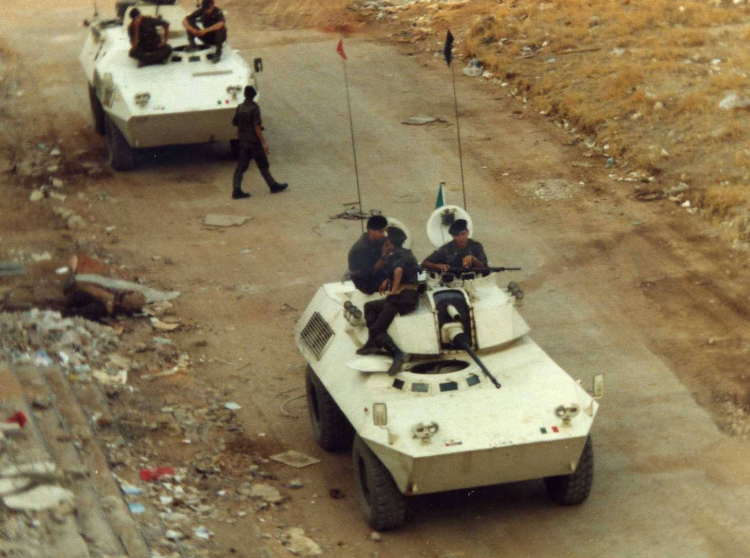
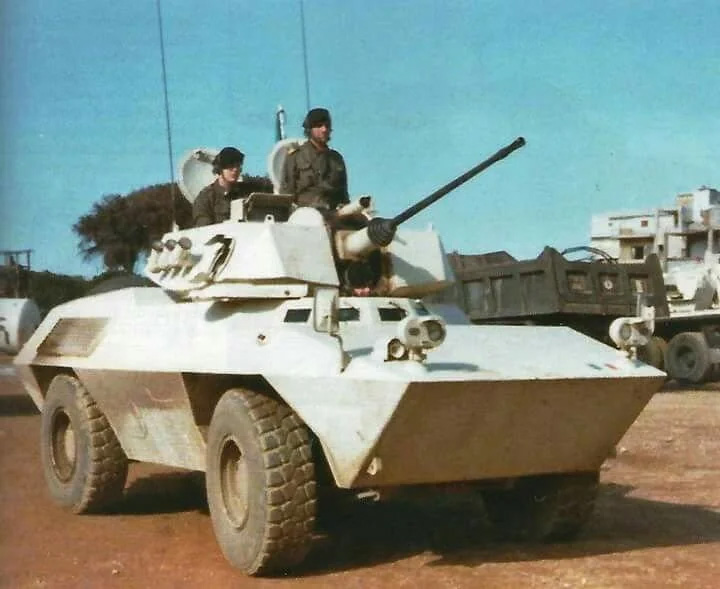
Top and bottom, white-painted UN mandate Italian vehicles in Lebanon
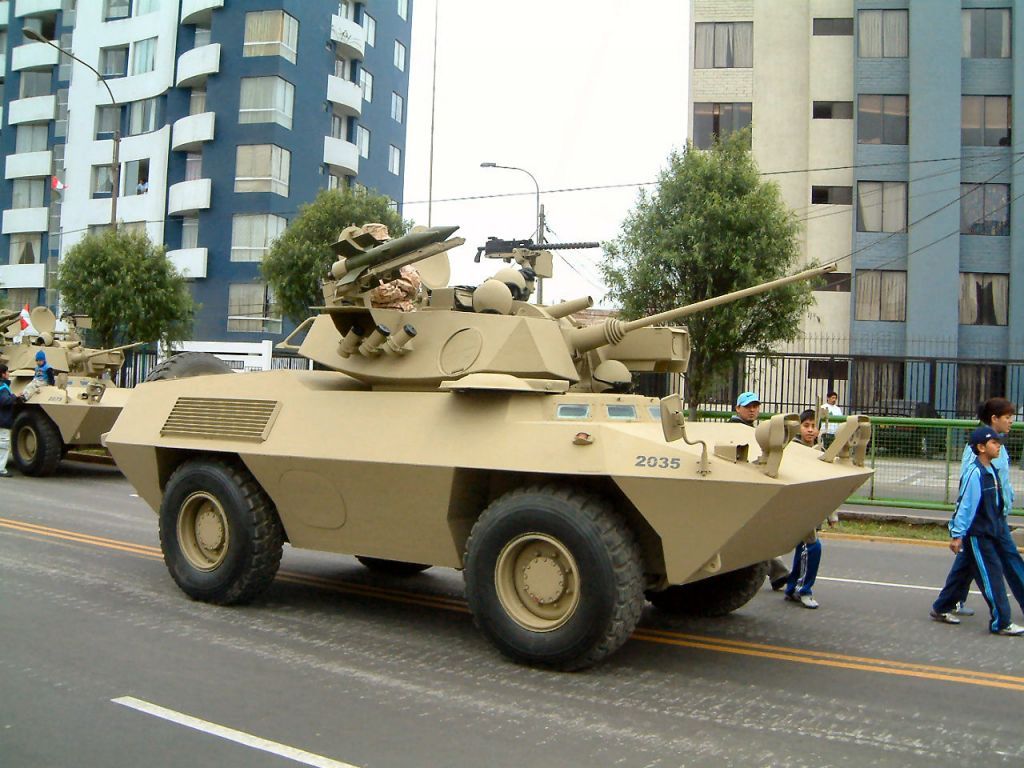
Peruvian Tipo 6616, modernized
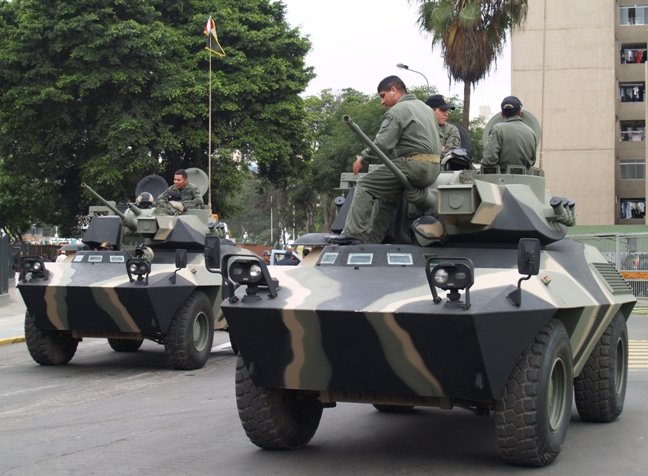
Peruvian Tipo 6616 of the older type, camouflaged.

Cold War Tanks


































Cold war tanks posters

Cold War Main Battle Tanks

Cold War Soviet Army
Museums, Movies, Books & Games
The Tanks and Armor in pop culture
Tanks and armored vehicles in general are only really grasped when seen first person: The mass, the scale, it's all there. Explore also the way tanks were covered in the movie industry, in books and in video games.Movies:
Best tanks movie on warhistoryonline.com
On imdb.com
On bestsimilar.com/
miltours.com
liveabout.com/
watchmojo.com
Video Games:
pcgamesn.com
historyhit.com
levvvel.com
vg247.com/best-tank-games
mmobomb.com/
alienwarearena.com

